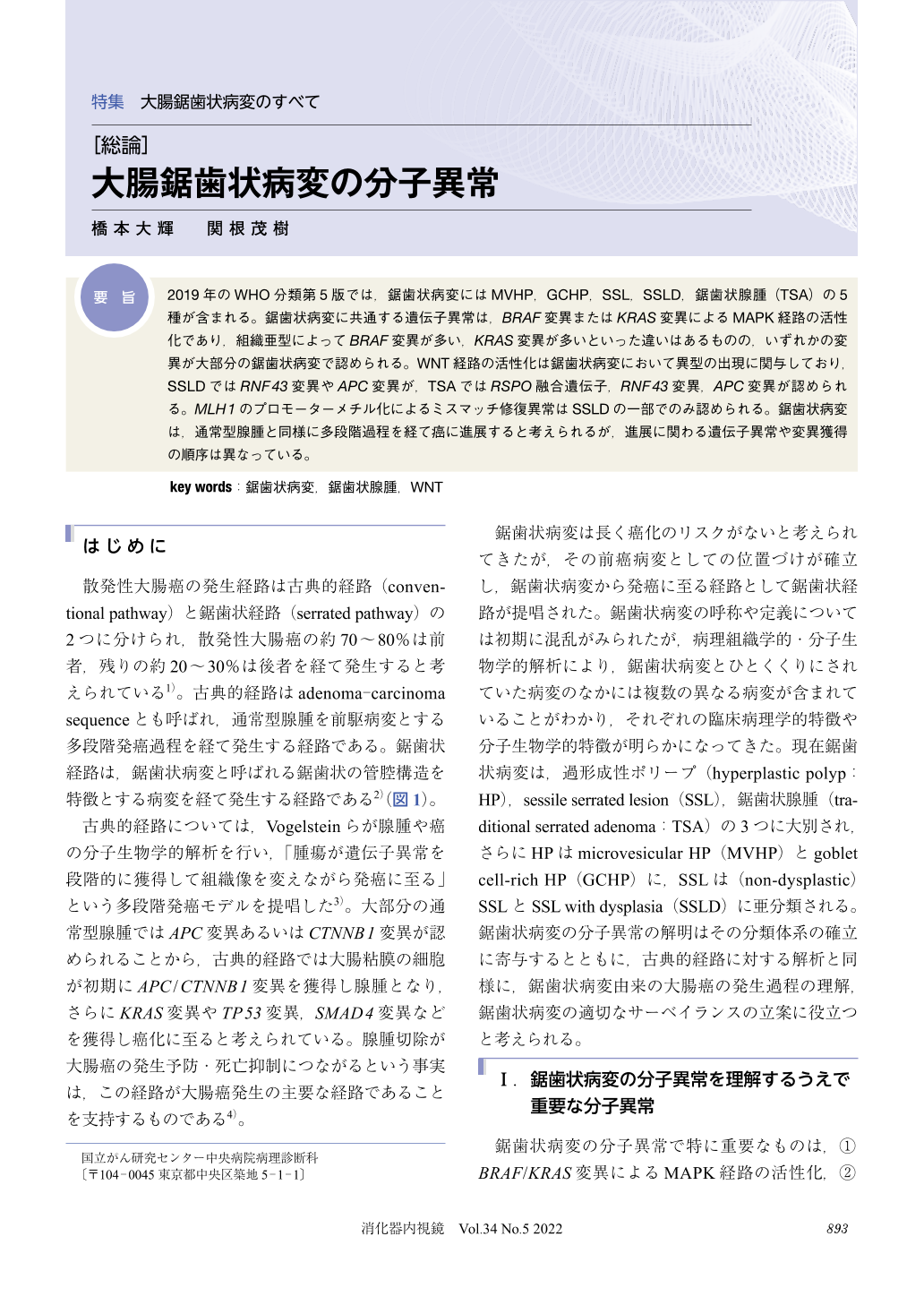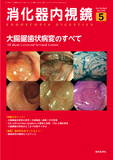Japanese
English
- 有料閲覧
- Abstract 文献概要
- 1ページ目 Look Inside
- 参考文献 Reference
- サイト内被引用 Cited by
要 旨
2019年のWHO分類第5版では,鋸歯状病変にはMVHP,GCHP,SSL,SSLD,鋸歯状腺腫(TSA)の5種が含まれる。鋸歯状病変に共通する遺伝子異常は,BRAF変異またはKRAS変異によるMAPK経路の活性化であり,組織亜型によってBRAF変異が多い,KRAS変異が多いといった違いはあるものの,いずれかの変異が大部分の鋸歯状病変で認められる。WNT経路の活性化は鋸歯状病変において異型の出現に関与しており,SSLDではRNF43変異やAPC変異が,TSAではRSPO融合遺伝子,RNF43変異,APC変異が認められる。MLH1のプロモーターメチル化によるミスマッチ修復異常はSSLDの一部でのみ認められる。鋸歯状病変は,通常型腺腫と同様に多段階過程を経て癌に進展すると考えられるが,進展に関わる遺伝子異常や変異獲得の順序は異なっている。
In the fifth edition of the WHO classification, serrated lesions include microvesicular hyperplastic polyp, goblet cell-rich hyperplastic polyp, SSL, SSLD, and TSA. The common molecular abnormality in serrated lesions is the activation of the MAPK pathway by BRAF or KRAS mutations. These mutations are found in the majority of serrated lesions, although there are differences in the prevalence of BRAF/KRAS mutations depending on the histological subtype. Activation of the WNT pathway is associated with the presence of dysplasia. SSLDs have RNF43/APC mutation and TSAs have RSPO fusion or RNF43/APC mutations. Mismatch repair deficiency due to MLH1 promoter methylation is found only in a subset of SSLDs. Serrated lesions are thought to progress to carcinoma through a multistep process similar to conventional adenomas, but the genetic abnormalities involved and the order of mutation acquisition is different.

© tokyo-igakusha.co.jp. All right reserved.


